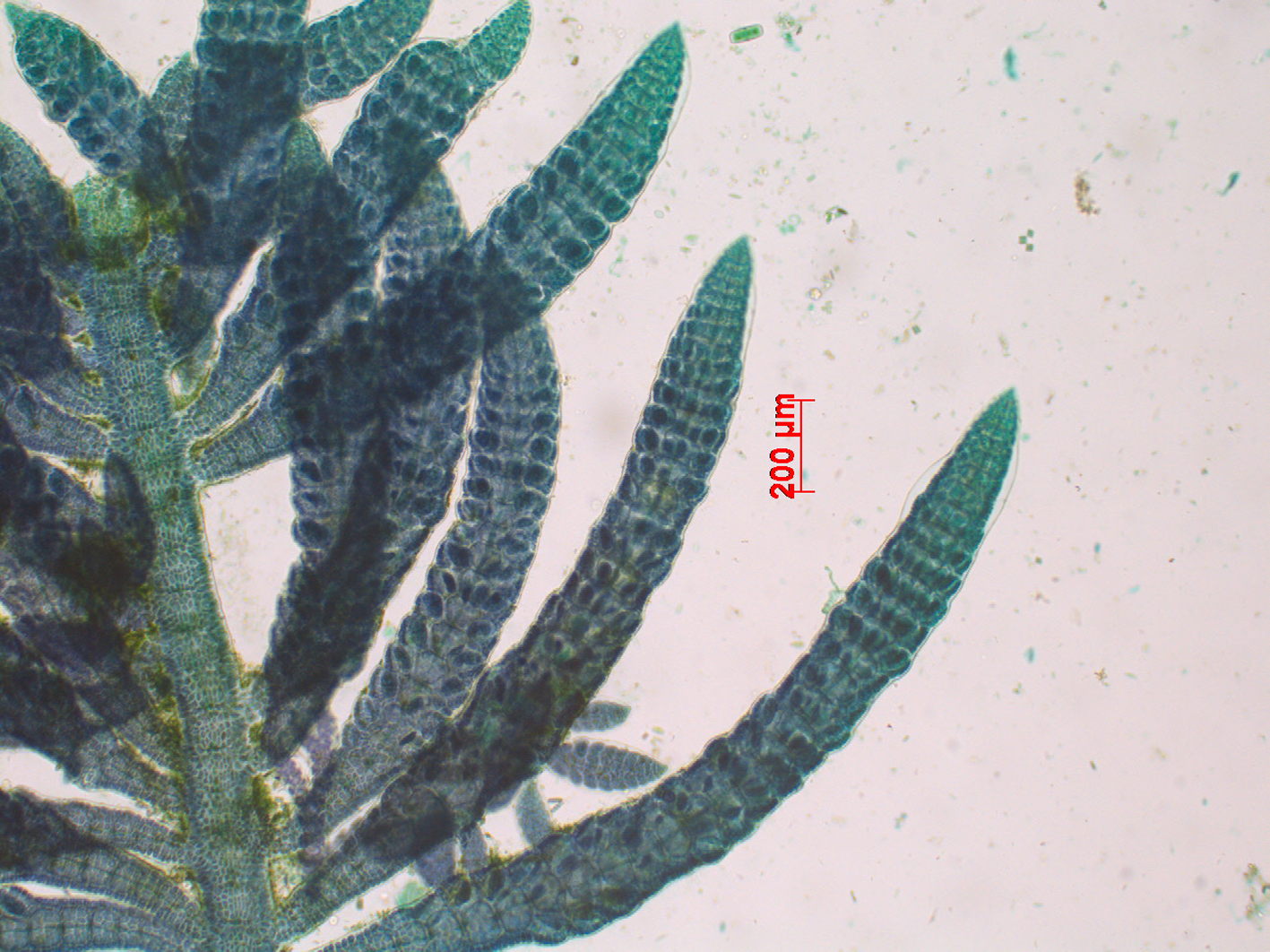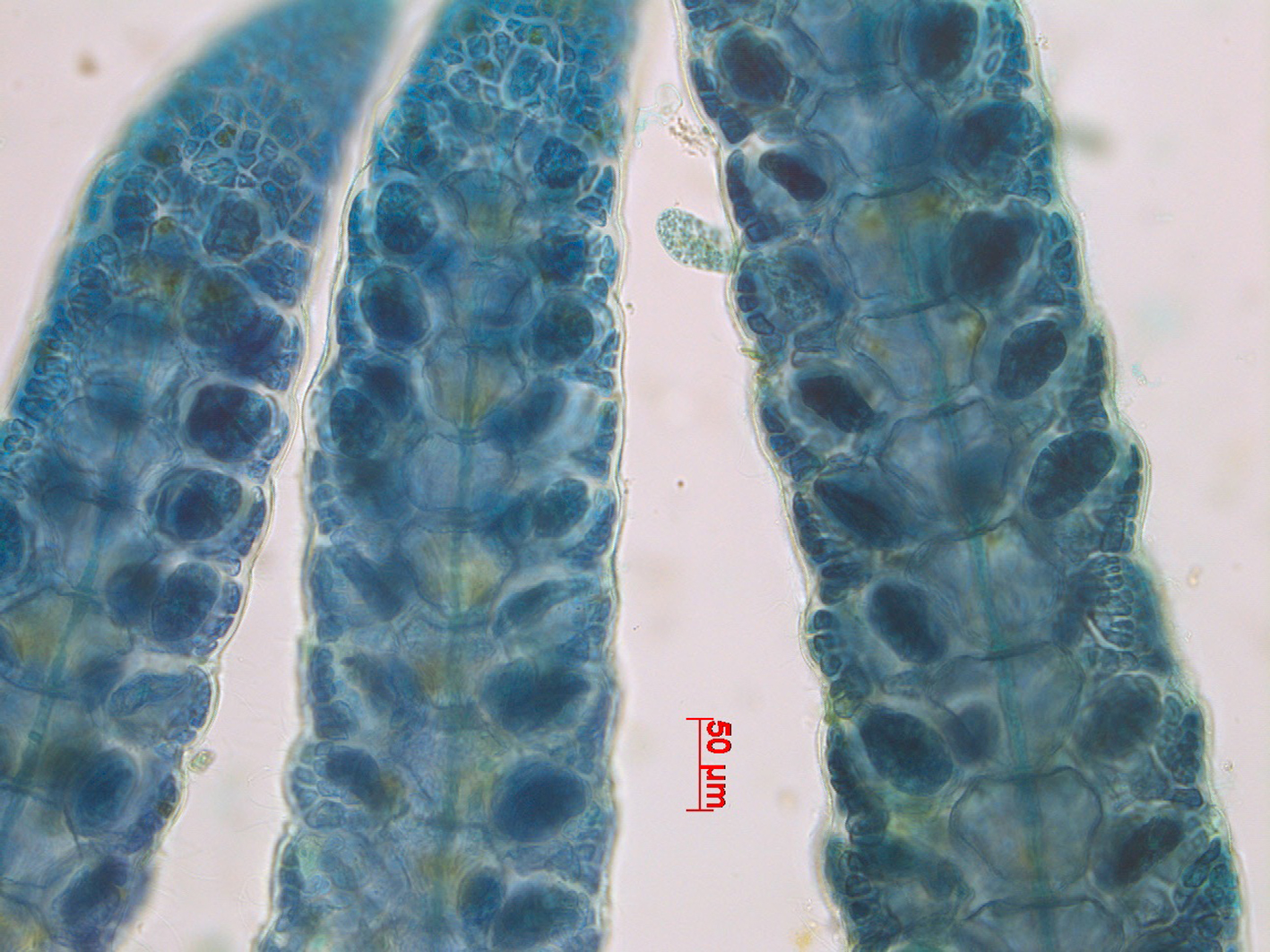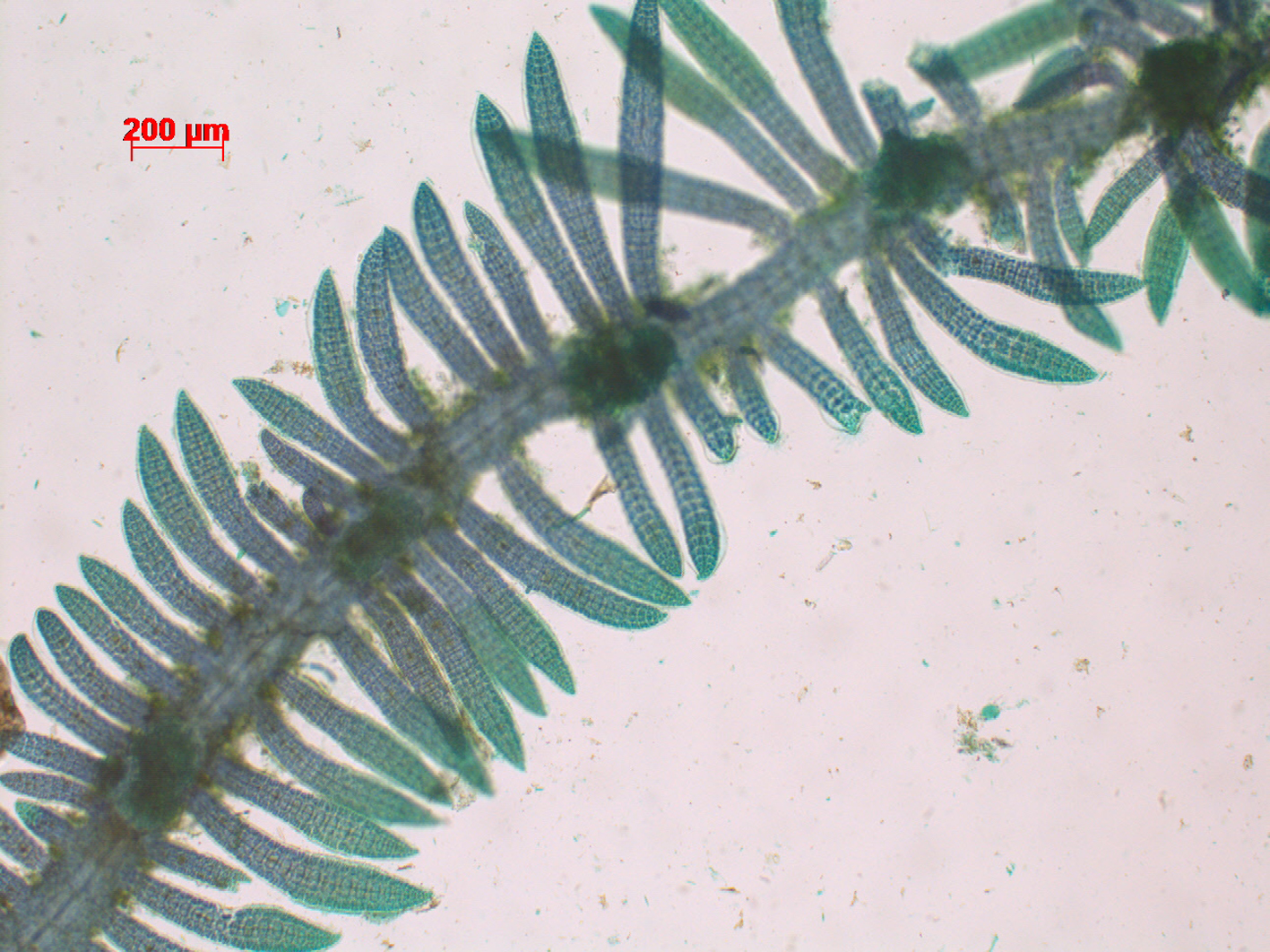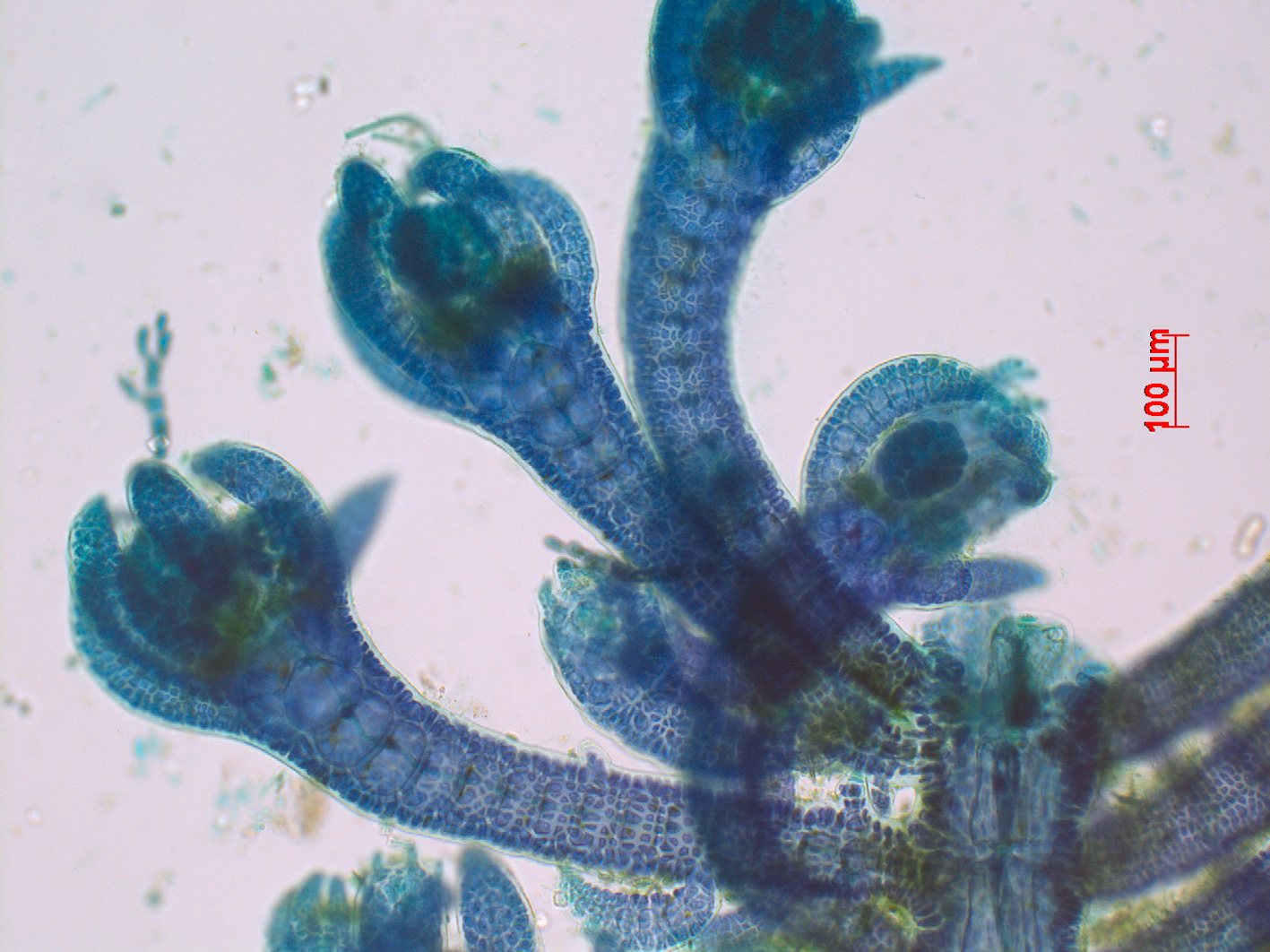Seaweeds of the South African South Coast


Order Ceramiales
Family Ceramiaceae
Ceramium poeppigianum Grunow 1868 '1867': 64, pl. VIII: fig. 2
Plant creeping on the host species (usually Amphiroa spp.), main axes up to a few cm long with one or two more or less regular rows of laterals of limited development. Axes attached to the substratum by massive bundles of rhizoids given off by the epidermis at intervals of 5-10 segments (sometimes on a few contiguous segments), usually from the main axes, but occasionally also from some proximal segments of the laterals. Apices straight. Usually cells of the main axis with eight periaxial cells, the two lateral ones giving off a side branch and then larger than the other periaxial cells. Cortication developing from two acropetal and three basipetal cells per periaxial cell, the acropetal cortication developing first. Cortication complete, with little variation of cells size, the periaxial cells completely covered. Main axes to ca. 200 µm in diameter.
All reproductive organs developing only on the laterals. Tetrasporangia completely immersed, often two sporangia of different age on one periaxial cell, up to twelve per segment. Sporangia measuring ca. 60 x 45 µm at maturity and more or less cruciately divided. Spermatangia covering the top half of the laterals. Carposporophytes seemingly apical on laterals, covered by ca. seven involucral filaments. Gonimoblasts up to three per carpopsporophyte, with spores to 40 µm in diameter.
Collections, ecology and regional distribution
A fairly common species, especially in the eastern half of the area; records extend from Still Bay to Mission Rocks/Cape Vidal in KwaZulu-Natal (26-56). An epiphyte of Amphiroa bowerbankii and A. ephedraea
World distribution: Outside South Africa, known from the Cape Verde Islands (Price et al. 1986).
Type locality: Port Natal (Durban area?) South Africa (Silva et al. 1996).
Note: The species has been studied in detail by Hommersand (1963).

Ceramium poeppigianum. Tetrasporophyte (on Amphiroa ephedraea), stained slide material, Double Mouth.

Ceramium poeppigianum. Detail of tetraspororagia, stained slide material, Double Mouth.

Ceramium poeppigianum. Male plant, seen from below, with regularly-spaced rhizoidal bundles. Stained slide material, Double Mouth.

Ceramium poeppigianum. Carposporophytes. Stained slide material, Double Mouth.
References Ceramium poeppigianum
Grunow, A. 1868 '1867'. Algae. In: Reise der österreichischen Fregatte Novara um die Erde in den Jahren 1857, 1858, 1859 unter den Befehlen des Commodore B. von Wüllerstorf-Urbair. Botanischer Theil. Erster Band. Sporenpflanzen. (Fenzl, E. et al. Eds), pp. 1-104. Wien [Vienna]: Aus der Kaiserlich Königlichen Hof- und Staatsdruckeri in Commission bei Karl Gerold's Sohn.
Hommersand, M.H. 1963. The morphology and classification of some Ceramiaceae and Rhodomelaceae. University of California Publications in Botany 35: vii +165-366, 52 figs, 6 pls.
Price, J.H., John, D.M. & Lawson, G.W. 1986. Seaweeds of the western coast of tropical Africa and adjacent islands: a critical assessment. IV. Rhodophyta (Florideae). 1. Genera A-F. Bulletin of the British Museum (Natural History) Botany 15: 1-122, 1 fig.
Silva, P.C., Basson, P.W. & Moe, R.L. 1996. Catalogue of the benthic marine algae of the Indian Ocean. University of California Publications in Botany 79: 1-1259.
Cite this record as:
Anderson RJ, Stegenga H, Bolton JJ. 2016. Seaweeds of the South African South Coast.
World Wide Web electronic publication, University of Cape Town, http://southafrseaweeds.uct.ac.za; Accessed on 07 January 2026.